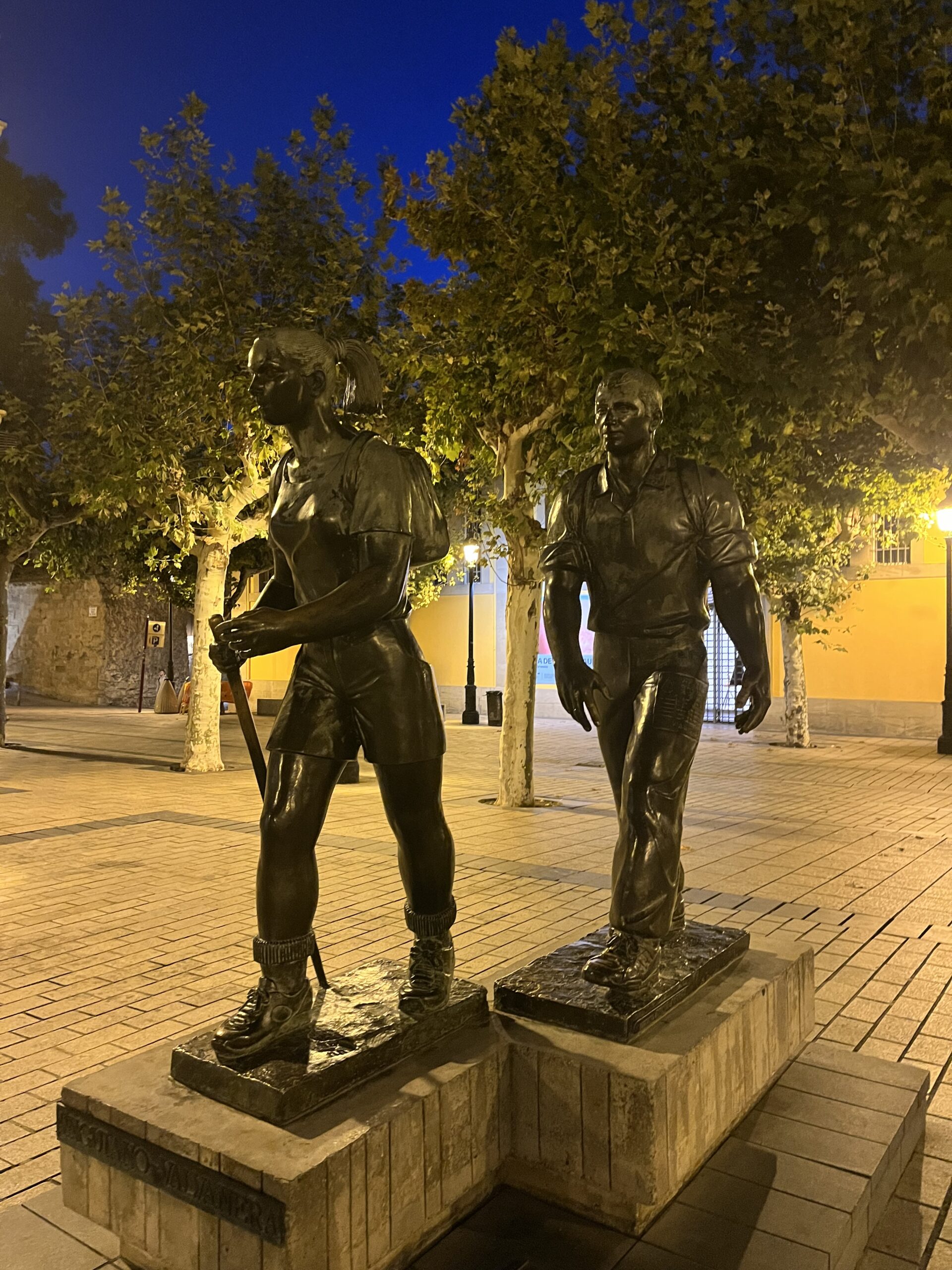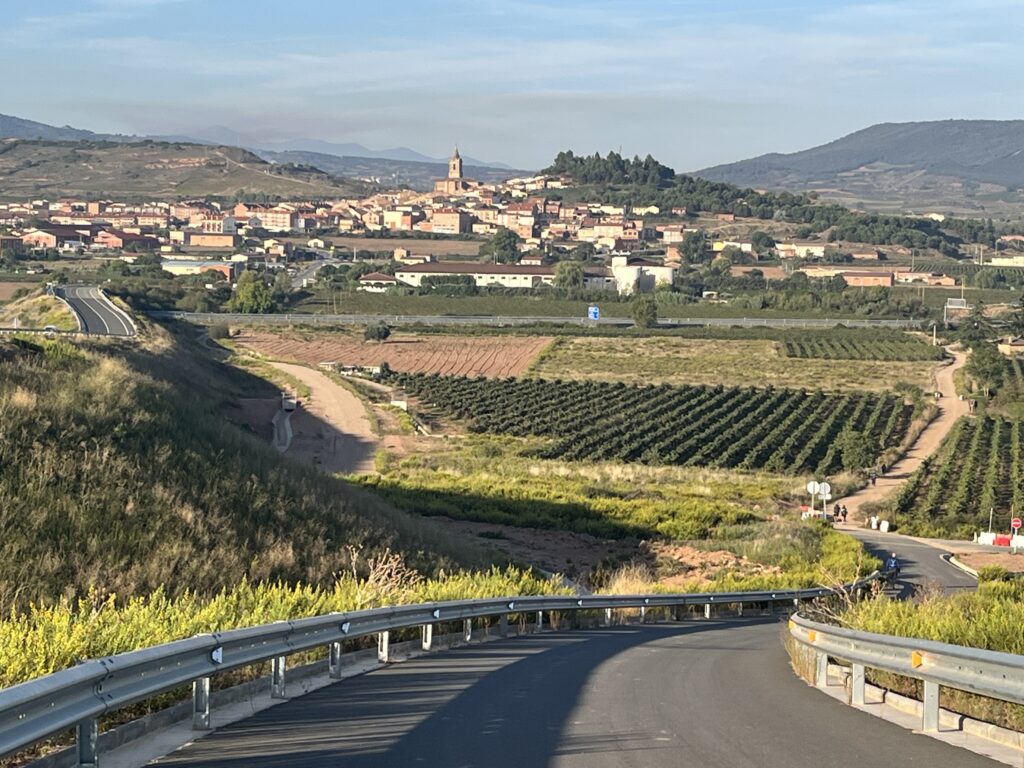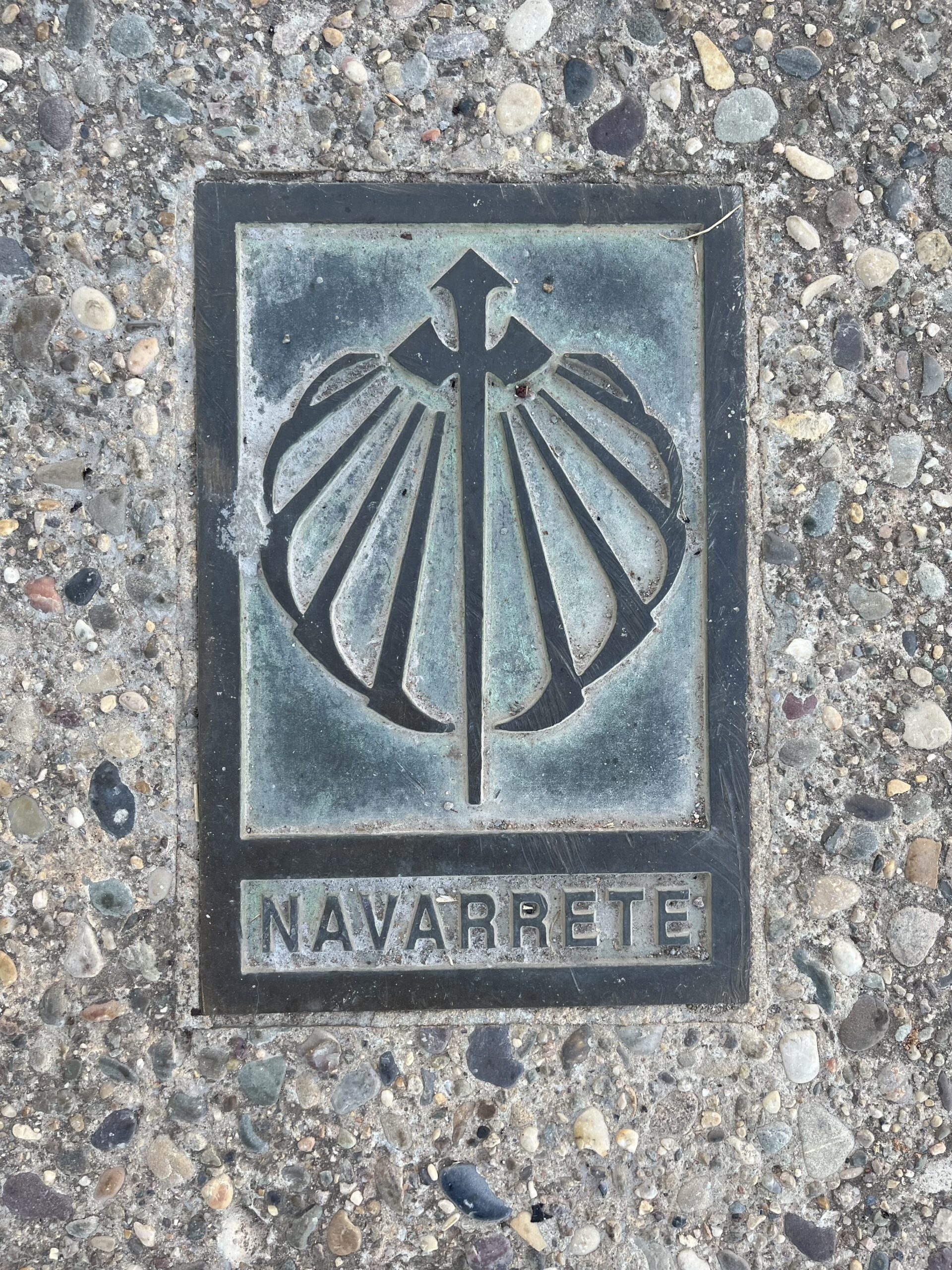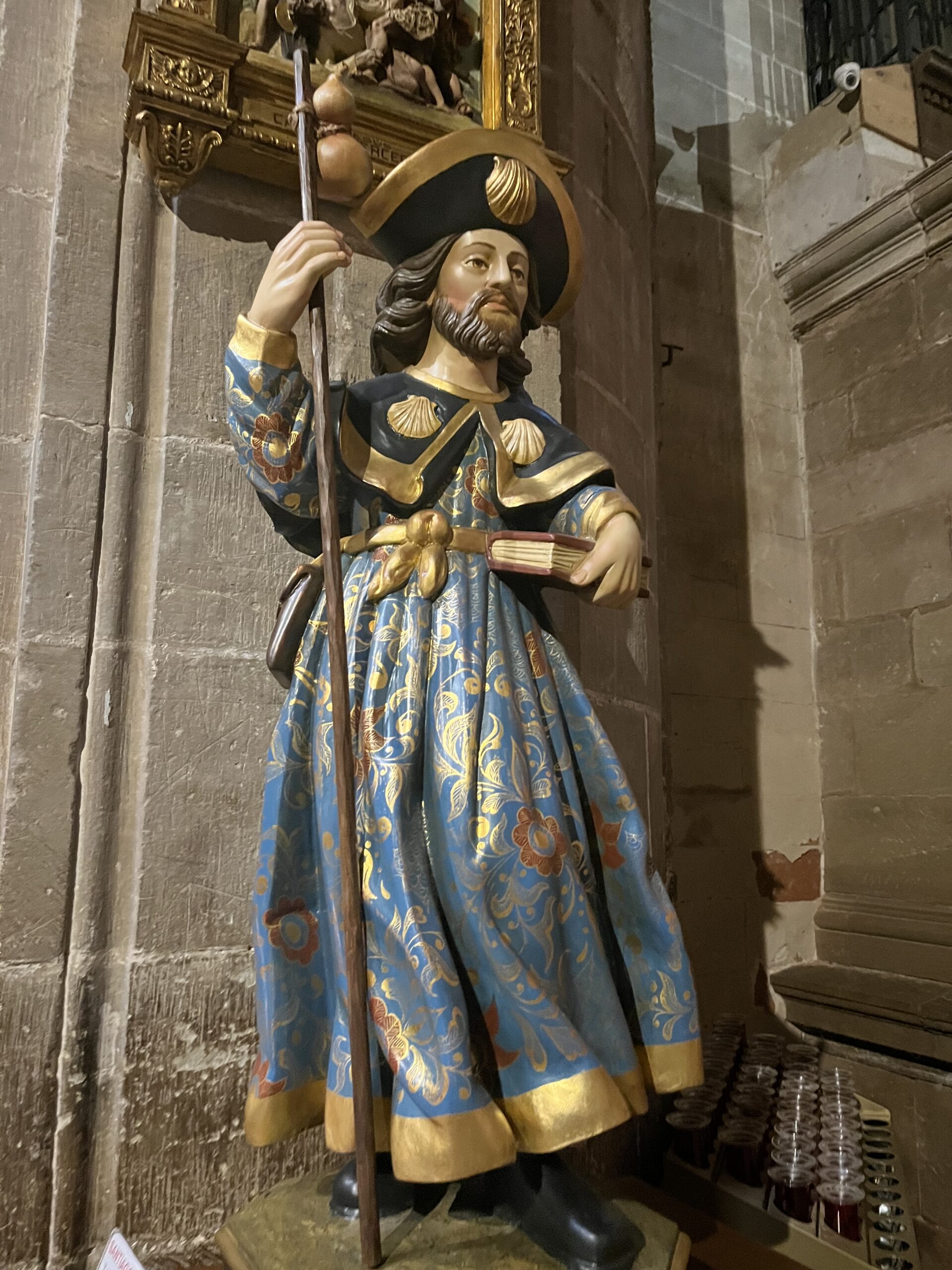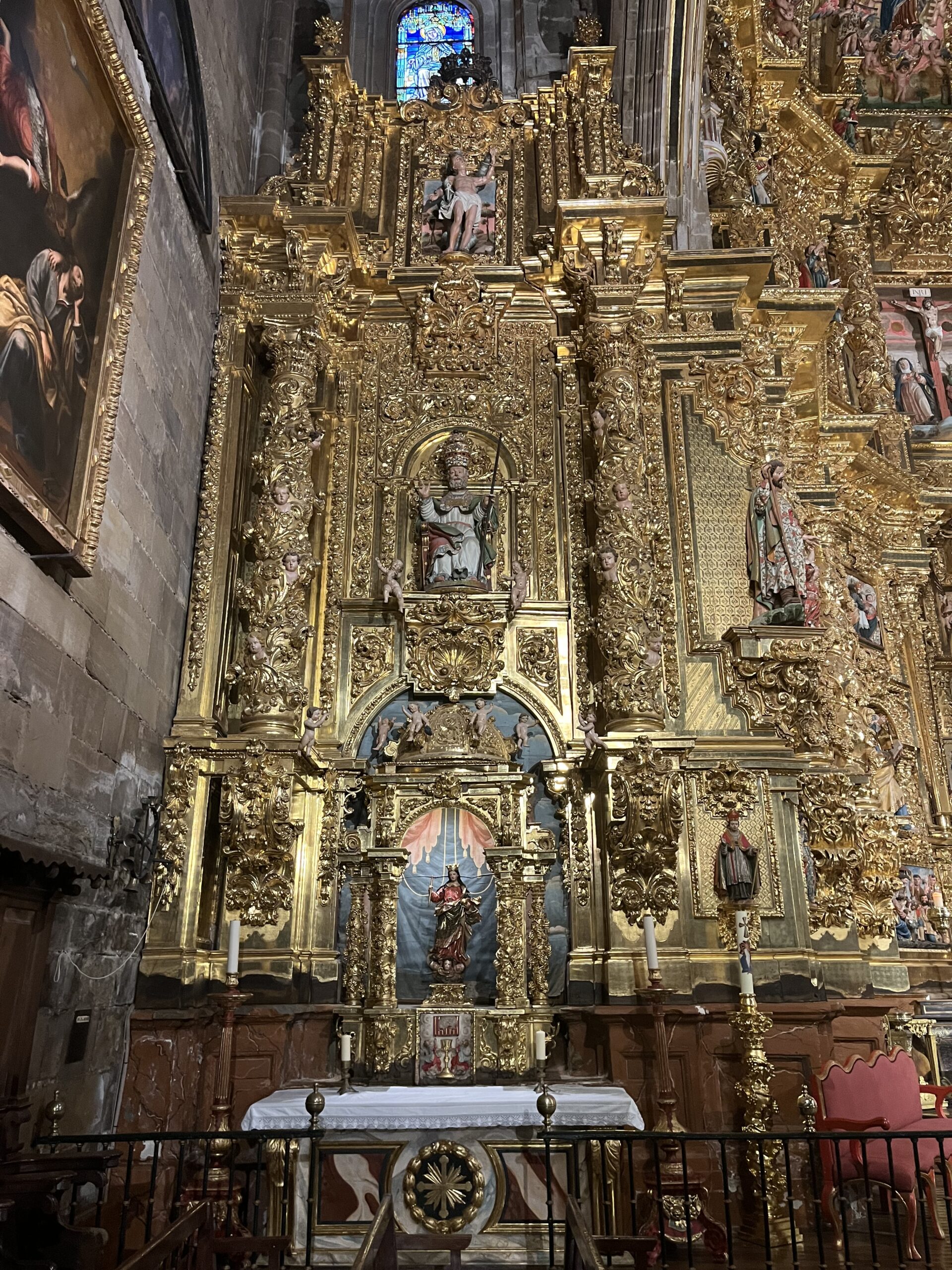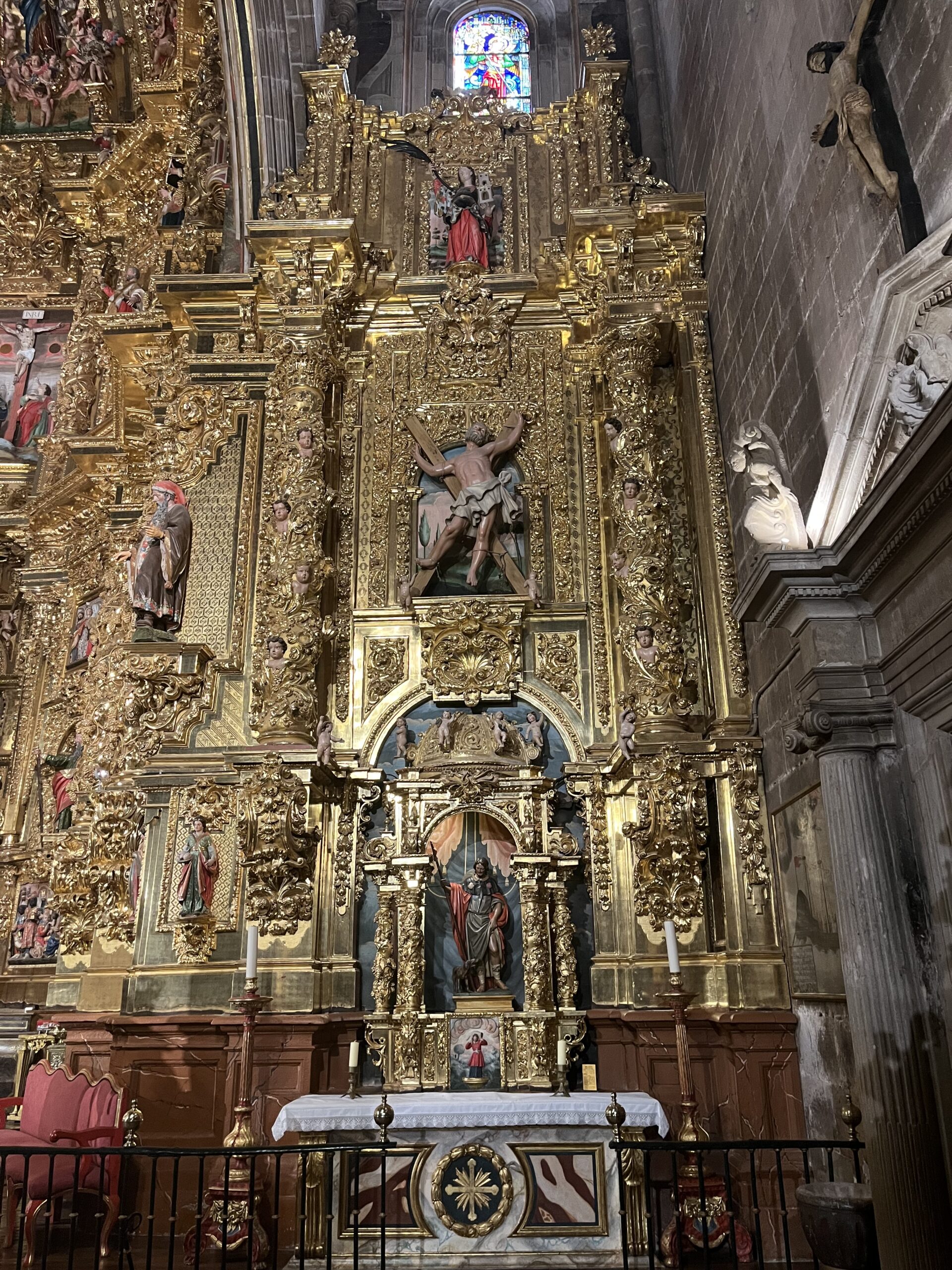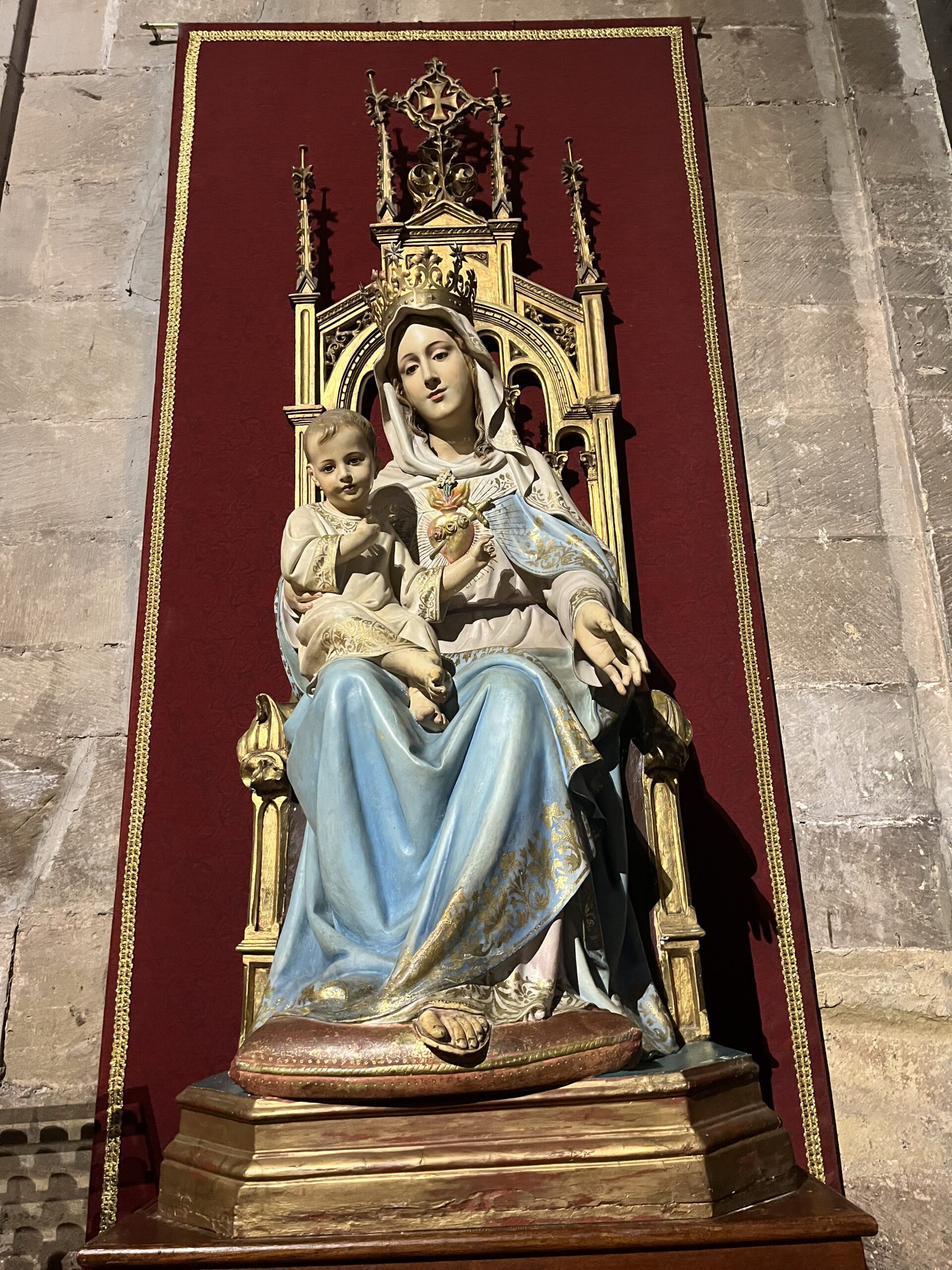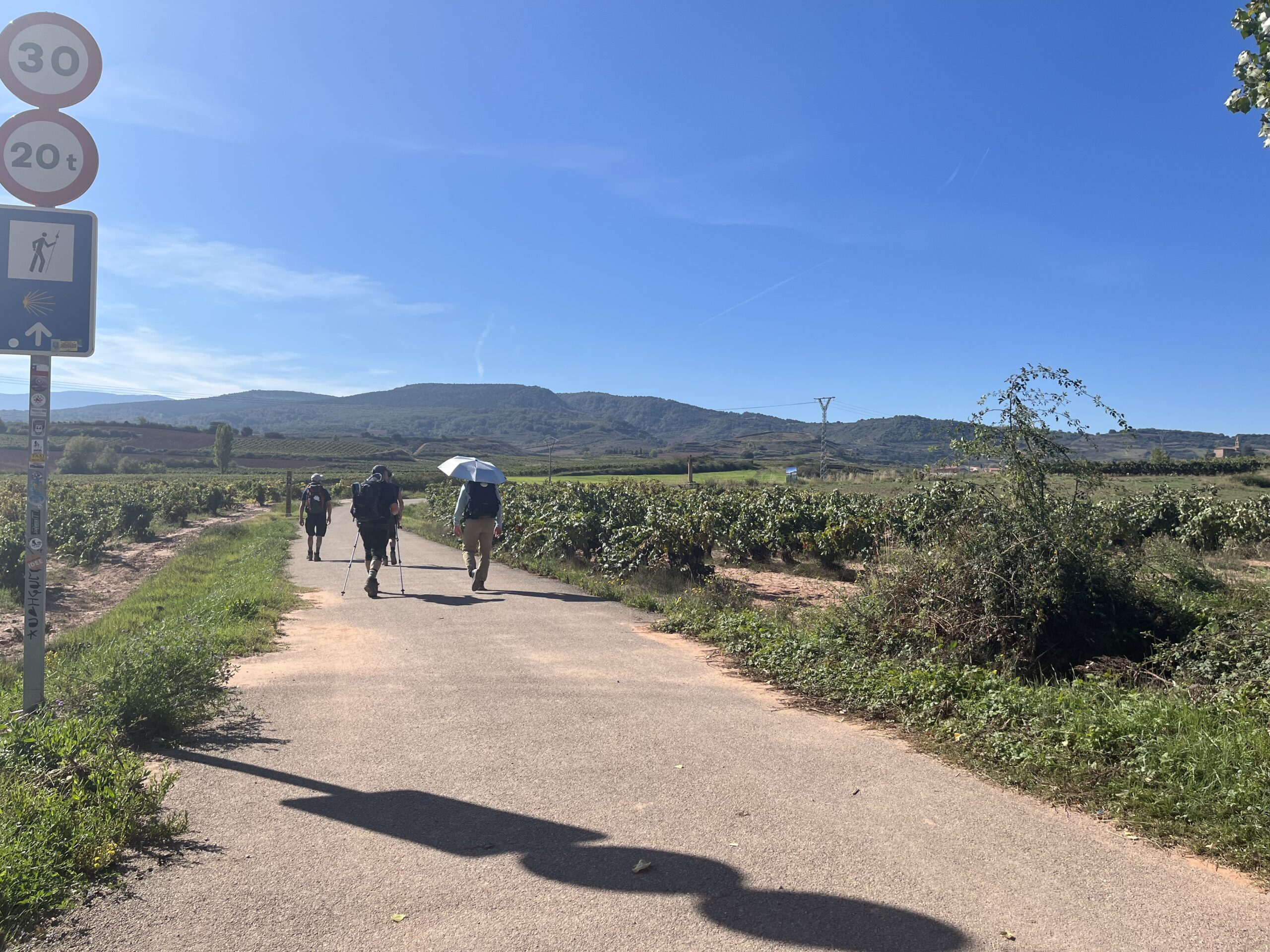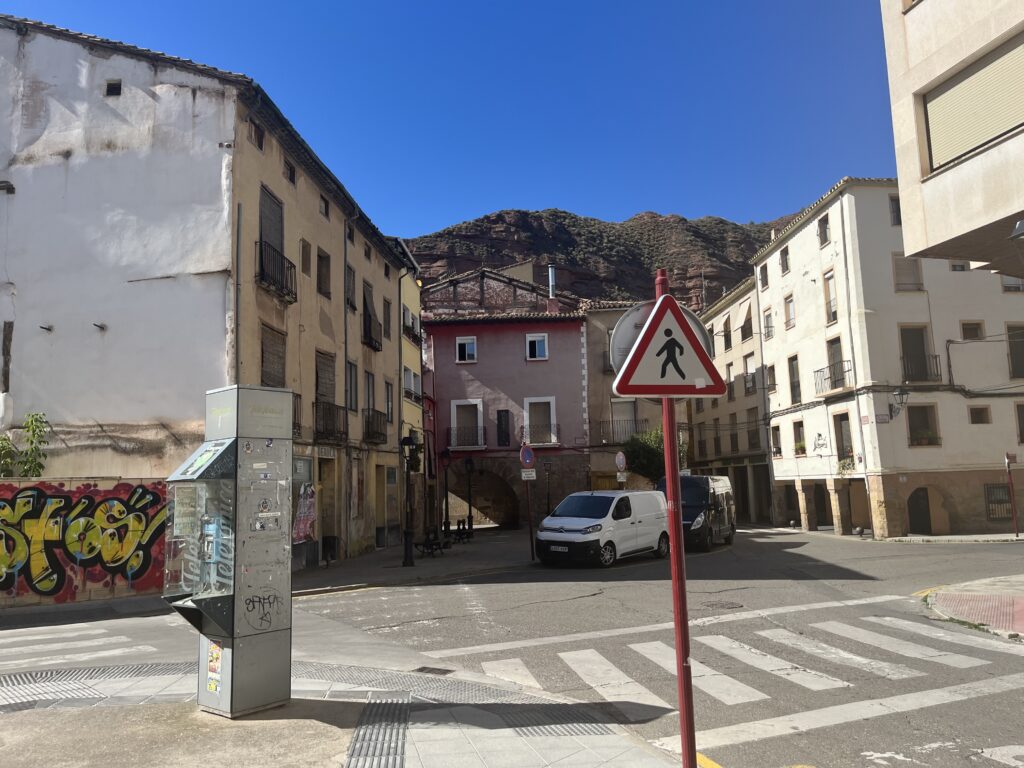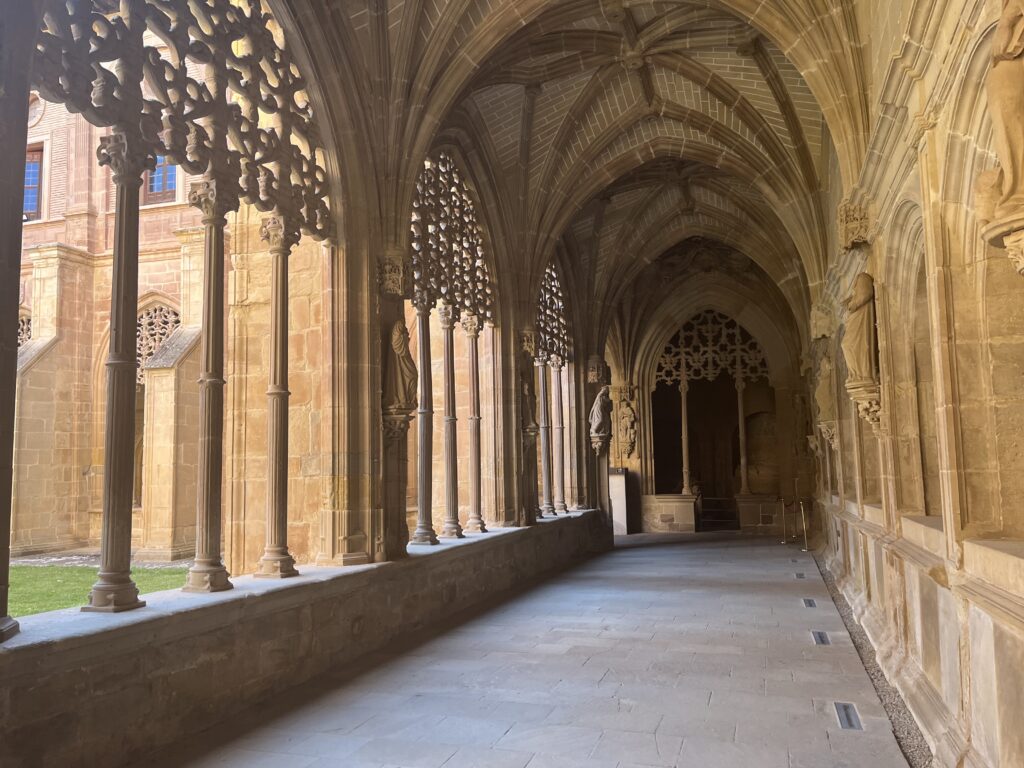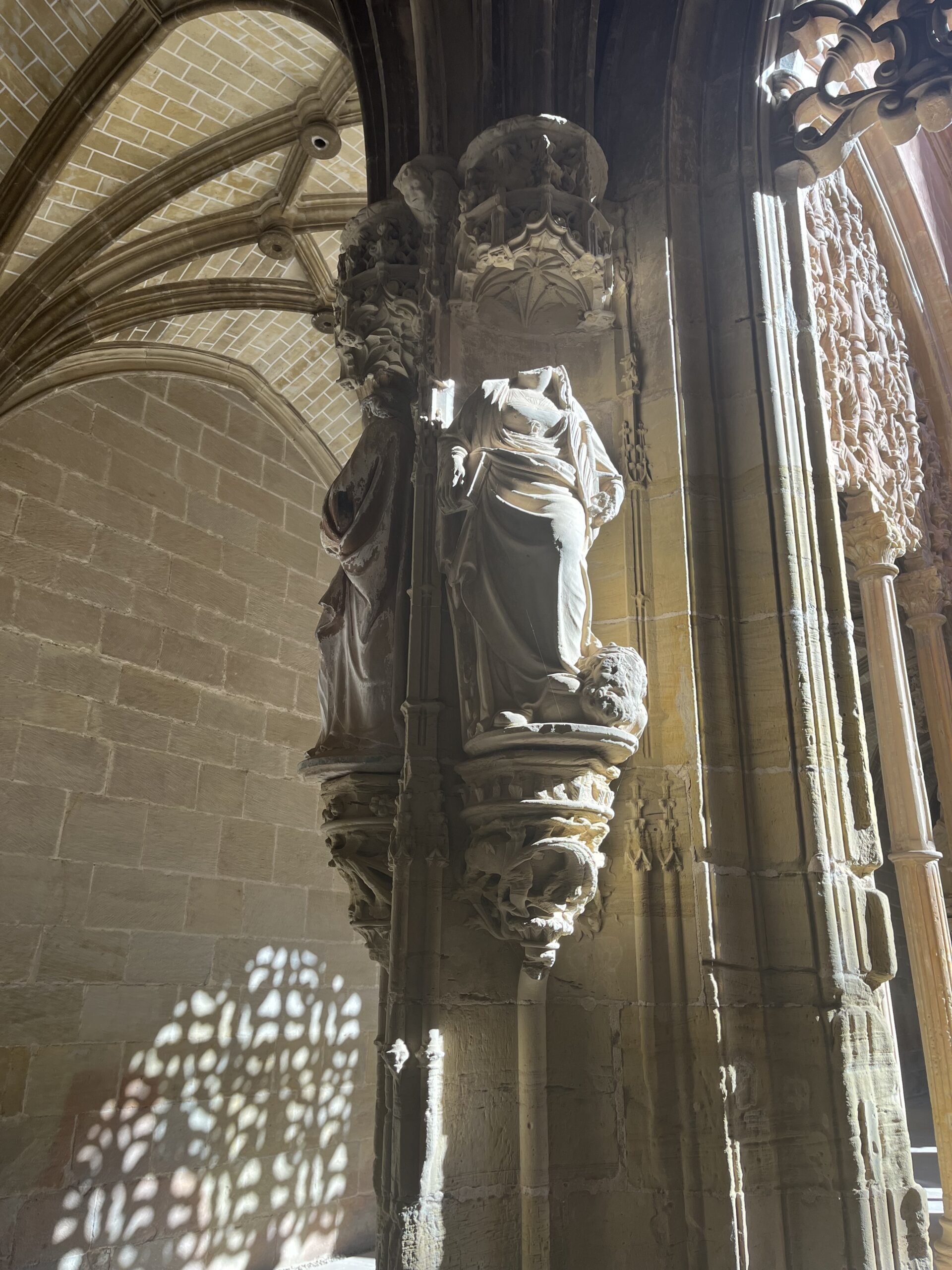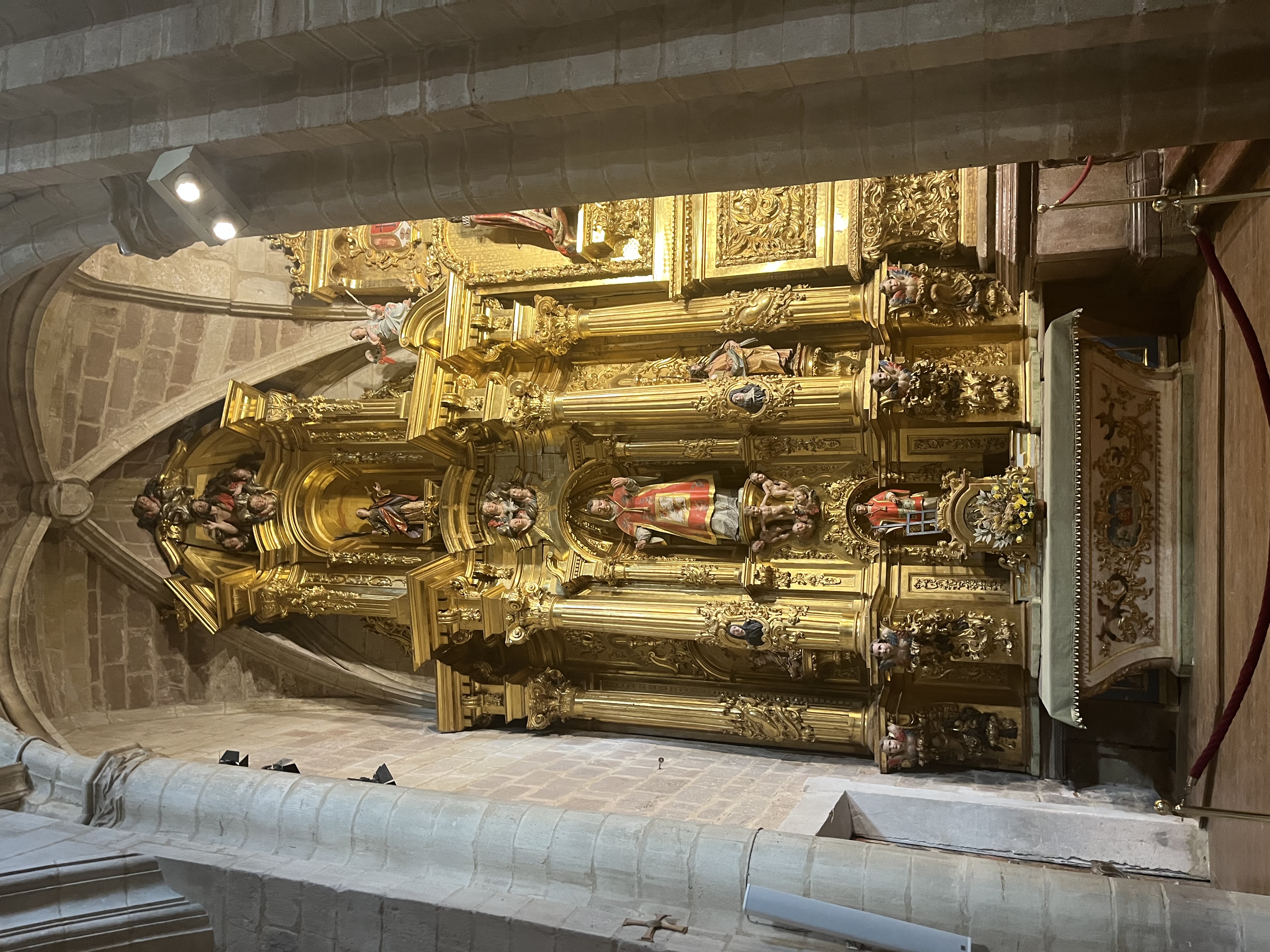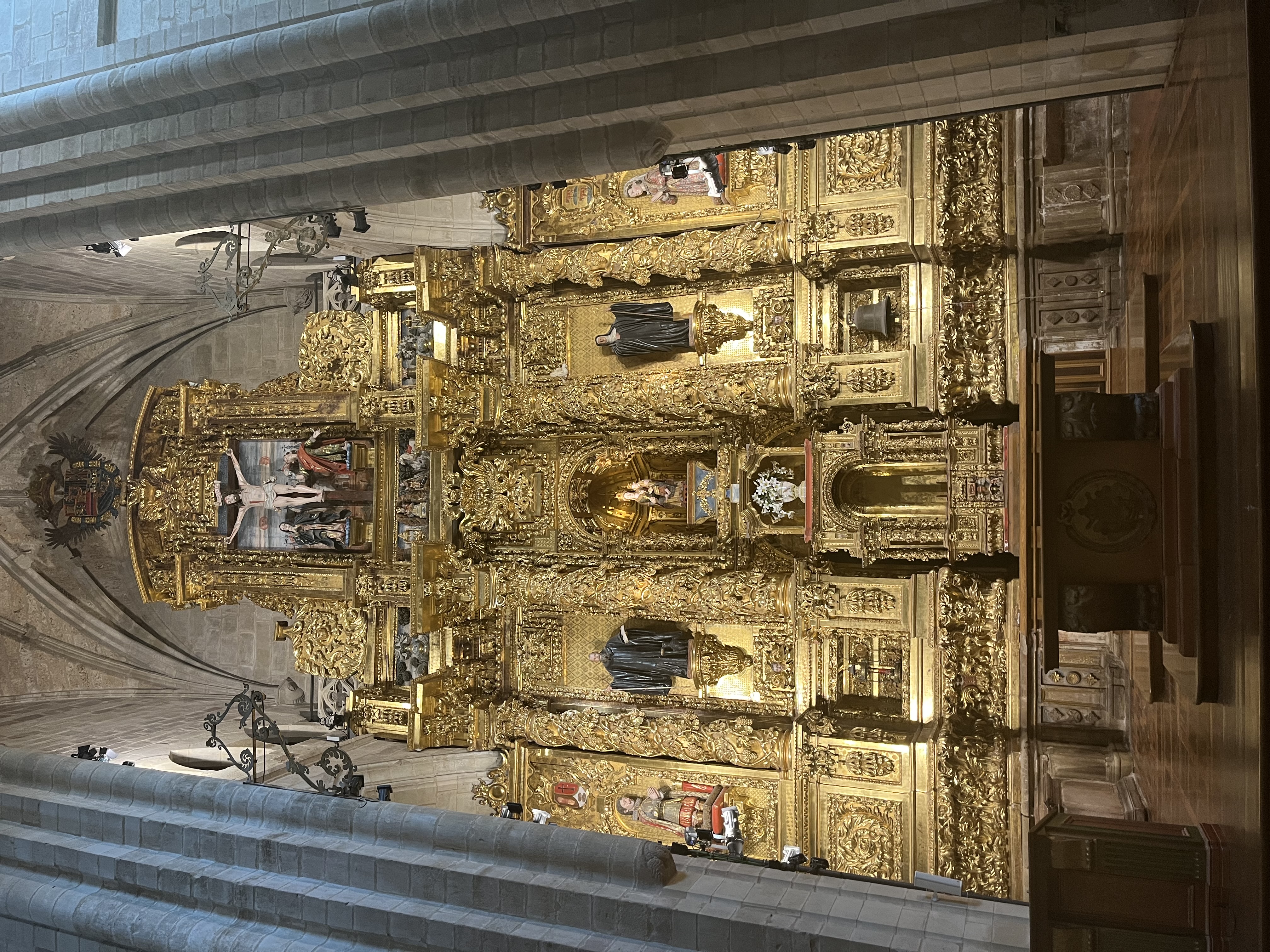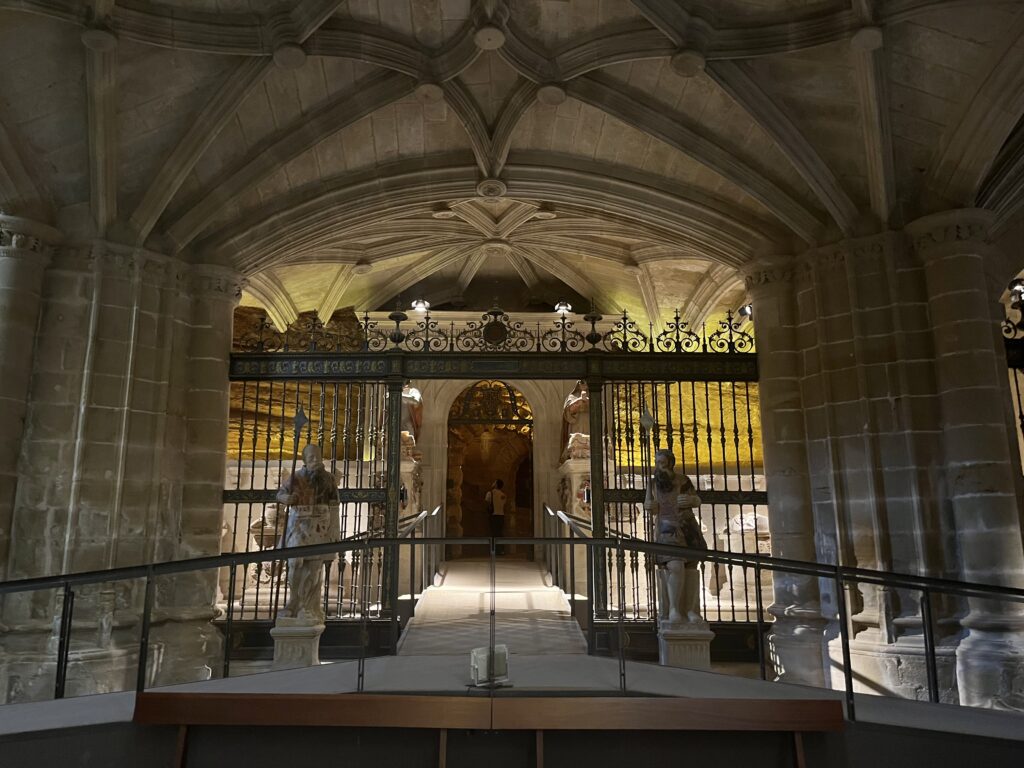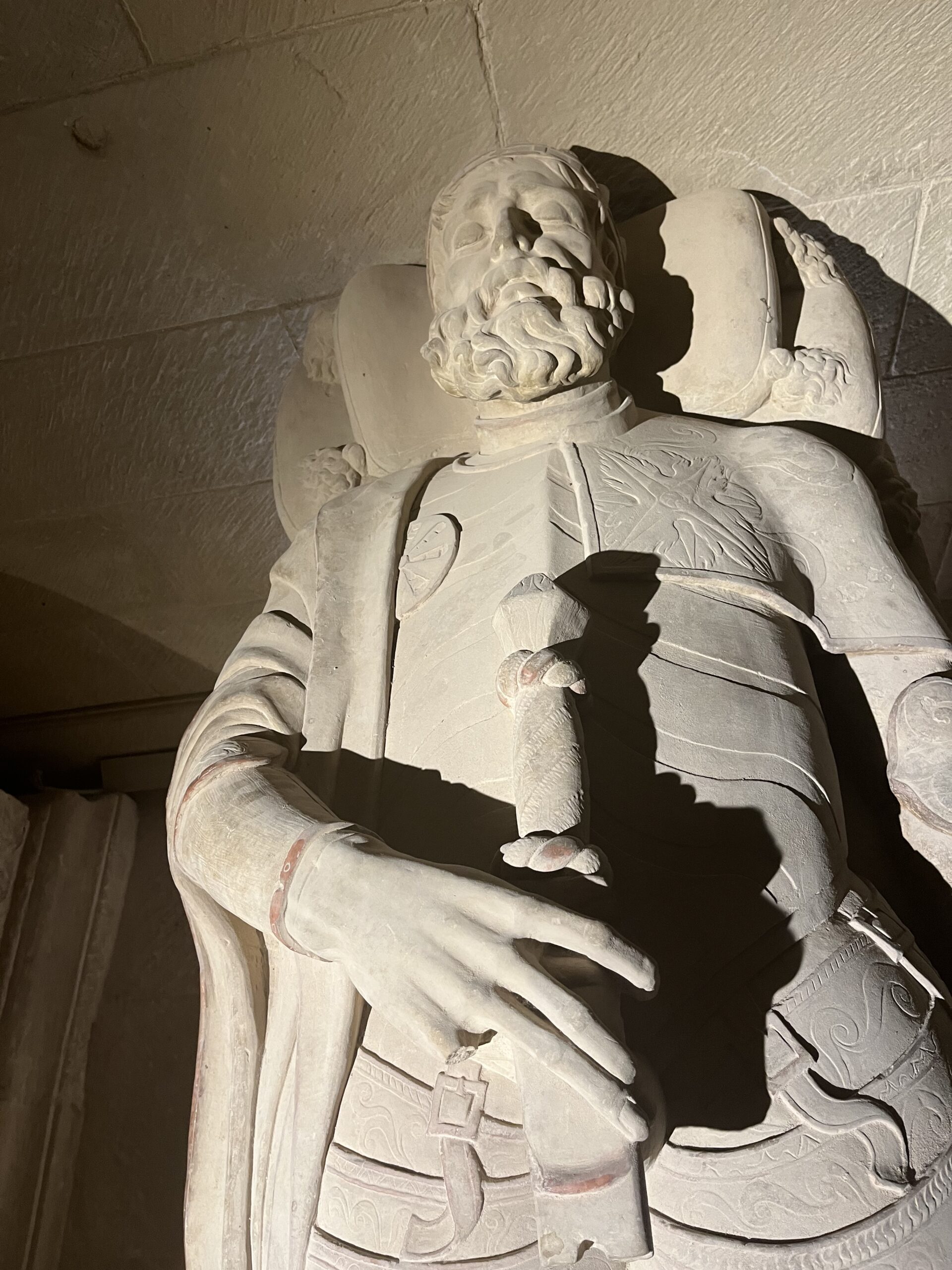Via Podiensis: Of Navarrete and Nájera
After a solid breakfast, a group of us were out by 7:20 and into the well lit streets of the city of Logroño. After some urban walking through a business district, the Camino turned down a lovely (and long) city park.
The road we were walking just continued as a pedestrian and bicycle boulevard lined with trees out into the countryside and farmland
Later, the park became more of a woodland park, and about 8:20 we passed an amazing little shrine to the Virgin. Shortly thereafter, the Camino turned to follow the shore of a beautiful little lake.
The group spread out as we each found our pace, and I was walking with Shawn from Ottawa. We had a great conversation about the Camino and why we were on pilgrimage. Shawn eventually pulled out ahead of me, and Tara caught up with me
We walked together as far as Navarrete, talking mostly about literature today. Really, anything to keep her mind off her feet, which are quite sore.
We spent some time walking an asphalt path over and next to freeway. This highway is in fact the N-120, one of the major highways in northern Spain. On today’s stage (and for a few days to come) the Camino spends lot of time paralleling, and even crossing, this highway. This makes a lot of sense, since the highway was built over an older road, which was in turn built over the original Camino path.
When we were really close, we were separated from the freeway by a chain-link fence. Over the years, many pilgrims have woven crosses made of sticks or other plant material into the fence.
About 9:25 AM, we passed the giant bull. It sits high upon a hill overlooking the freeway, and I believe it was originally an advertising billboard. By this point, it’s been there for decades and has just become part of the cultural landscape.
We spotted Navarrete as we came down the hill, a steeple surrounded by a hill town, with mountains in the background. The asphalt path had by now become an asphalt road.
As we descended into the inevitable dip just before climbing the hill into town, the Camino reverted to its usual dirt and stone form, this time running through the middle of a vineyard.
As we crossed a bridge over the freeway entering town, you could see hills all around us in the distance, and foreboding mountains to the north. A glorious view.
We arrived in the town just before 10 AM. Time for second breakfast. I had a café con leche, of course, but instead of my usual Napoletana, I had this amazing pastry with dark chocolate and orange. anything to pack on those calories!
I also had a mission here. My buddy Bruno had contacted me that he had lost his hat somewhere in Navarrette. He asked me if I would check in the café, the church, and the supermarket to see if it was in any of those places. The café had a stack of lost hats, but none of them were even close to his. Nobody else had any hats at all.
And then, the church. In theory the parish church of the little village of Navarrete is simply another Gothic structure with an interior Baroque overlay. In practice, it is so much more than this. It is, quite simply, the most beautiful Baroque structure I have ever seen.
The retablo of the higher altar takes up the entire apse and spills over to the side altars. It stretches to the dome three or four stories up. The statues and scenes are vivid and colorful, with personality and verve.
The central figure of the Virgin above the tabernacle appears to be Our Lady Untier of Knots, and it has a movement and life rarely seen in these sorts of statues. I have no idea how to count the number of altars in this building, and many of them were they in a parish church by themselves would be worthy of note.
If the definition of beauty is something that on its outside shows its true interior nature, then this church, representing the human attempt to show forth the glory of God, the kingdom of heaven, and the communion of saints, is the definition of beauty.
Simply put, this “little village church” is one of the great and beautiful temples of Christendom. Might be an unpopular opinion, but I stand by it.
After stain perhaps a little too long enough for it, I left town at about 11 o’clock. Tara had already pushed on ahead.
Within 15 minutes, I put the umbrella up. The sky was clear, the sun direct, and it was warming up fast.
After a bit of road walking out of town, it was back to the heart packed earth and stone, setting out across farm and field. and vineyards. Endless vineyards.
And already the next Hill Village, Ventosa, was in view. For a while, just to change things up, it was a roadwalking through vineyards. Throughout the day, I saw a couple of other people rocking the umbrella luck. Glad to know I am no longer a Lonewolf.
Then it was back to gravel, and for a long time there was a Highway to my right and the Vineyard to my left.
Eventually, just afternoon, there is a fork in the road. It is possible to take a shortcut and skip the hill town of Ventosa, but I’ve never done this. The way to Ventosa is on asphalt, and it is uphill, and yet I have always gone there. Sure, there’s a café. There’s a lovely little village church. But none of those are the reason.
No, I visit Ventosa because of the memories of a special night spent at the Albergue a there in 2013 with my Camino family. the other guy is (or perhaps was) run by the Ventnor through whose fields we are walking.
She had a little shop where you could buy bottles of her wine for two euro. Our group bought a couple of bottles and settle down to talk as pilgrims do. She saw us and pulled three more bottles out saying “no, no, no. pilgrims need wine!”
She joined us and regaled us with tales of the local area and her vineyard. I remember somebody asked her how long grapes have been growing in the region, and she replied “I don’t want to say that these are the vines that the Romans planted. But they are definitely their children.”
I arrived in Ventosa at about 12:20, and immediately sought out the café. Not too difficult, as it’s basically the first building you come to. Lunchtime!
I ended up having a long conversation with two different umbrella users, Dave from the UK and Bryan from Illinois (currently living in Germany and flying for FedEx). We are a club of three! It was almost 1:30 when I left, which was far too late, as the sun was beating down. But hey! At least I had my umbrella…
It was back to roadwalking out of the village. Depending on which resource you consulted, Nájera was somewhere between 9 1/2 and 12 km away.
The weather app insisted that it was only 72°, but it sure felt closer to 80°. regardless, it felt good when the Camino got off of the asphalt and back on the dirt road through the vineyards.
For a while, the path turned into a scrubby sort of woods. When I say “path”, that’s a bit of an exaggeration. At this point it was more like walking up a washed out stream, wildly uneven ground and a central channel filled with rounded stones and boulders.
I climbed to the top of the ridge, and there was a spectacular view looking out behind me. The way ahead, though, was hidden by trees.
I soon came to the down slope on the other side of the ridge, and across acres and acres of vineyards I could see a town in the distance in the shadow of bluffs and hills. This was Nájera. It cheered me immensely to see the town, even if it was a long way off.
My walk after lunch was completely alone. I passed a couple of pilgrims and we always exchanged a friendly “hola” or “Buen Camino”, and I could see several more in the distance ahead of me as the undulations of the land permitted, but I was largely left to my own thoughts and contemplation.
At some point around 2:30 PM, I began passing fewer and fewer vineyards and started moving into a more industrial area. The comfortable dirt road acquired more and more gravel as I went, until finally that was the dominant walking surface.
And it was beastly hot.
For a while, the Camino even paralleled the banks of a completely dry river.
At about 3 PM, the Camino it started to pass an odd mixture of houses: some were large and featured swimming pools, and some were literally shacks made out of corrugated metal.
Just minutes after telling Francine by text that I was probably a good 30 minutes away from town, I rounded a corner and suddenly found myself in town at about 3:05 PM.
Now the quest to find a bed for the night began. It took a bit – I only managed to find a place after three other places were full – but the place I finally found was great. Very much like a gîte in that there were no bunks! Once the usual ablutions were completed, it was time to explore the town.
It turns out that my albergue is in the oldest part of the town, and near all of the interesting stuff. So that was a bonus.
My first stop was the Monasterio de Santa María la Real. Originally constructed in the 11th century, it had a major makeover 400 years later with many Gothic elements added. And of course, it wouldn’t be Spain if you didn’t have a whole bunch of Baroque thrown in the mix.
The 16th century cloister is magnificent, but also a little sad. It’s sometimes called the “cloister of the headless Saints” because so many of the statues – the ones that haven’t been completely destroyed or removed – are missing their heads.
There was a period in the 19th century when Spain nationalized all of the properties of the church, in imitation of Henry VIII (that scoundrel) and the French revolution. For a while, this monastery served the Spanish state as a prison, and the story goes that the prison guards used to amuse themselves by trying to shoot the heads off of the statues.
Although the properties were eventually (mostly) returned, the damage had been done.
Moving onto the monastic church, it is once again a predominantly Gothic building with all of the interior altars replaced by Baroque, Rococo, and even Neoclassical elements.
The retablo of the high altar dates to the 17th century, and prominently includes statues of Saints Benedict and Scholastica. It also incorporates elements from the previous Gothic altarpiece – an amazing crucifixion scene including the figures of the Blessed Virgin and Saint John – as well as an 11th or 12th century statue of Virgin and Child known as “Virgen Romántica de Santa María la Real”, which is more of a description than a name. I find the faces on this particular statue to exude kindness. Additionally, the Virgin’s face has a touch of sadness and the Christ child has a haunting look, I would almost describe it as one of destiny and acceptance.
As wonderful as the statue is, it is not the original statue known as Santa María la Real, also known as the Virgen de la Cueva (Virgin of the Cave). The original statue is in a cave behind the church and accessible from the nave.
And therein lies a tale.
In 1044, King García Sánchez III of Navarra was chasing a hawk when he found this cave. Enshrined within was this statue of the Virgin with Child, complete with fresh flowers and a burning lamp. The King founded a church here the next year.
Several times, they attempted to move the statue into the church, and each time the next morning the statue would be mysteriously in the cave again. Finally, they gave up. The statue has been there ever since.
Many of the subsequent kings and queens of Navarra are buried in the entrance to the cave. In fact, the entire current monastic church was built as an extension of the cave.
After exploring the place, I returned to the monastery church, where I prayed Vespers for the intentions of the Camino.
As I was leaving, I ran into my old friend Philipe. On my recommendation, he will finally be taking his rest day… in Burgos, which I told him I thought was the most beautiful city in the world.
For those of you keeping score at home, this is the end of my sixth week walking, and my total is 1031.2 km, or about 641 miles.
Date: 28 September 2023
Place: Nájera
Today started: Logroño
Today’s Photos!

